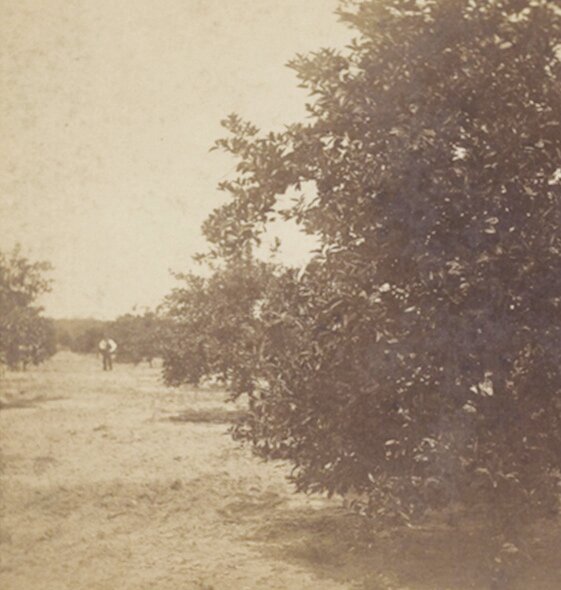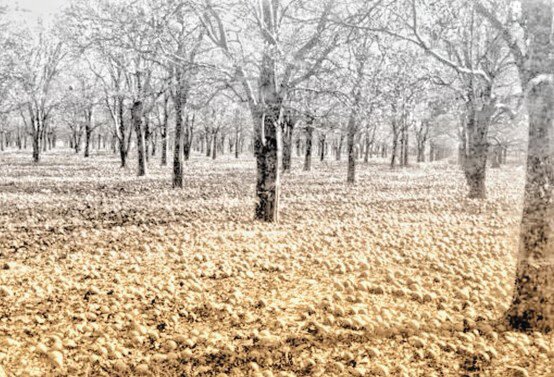This Month in Clay County History: The Big Chill
One of the most infamous series of winter weather events in 19th Century Clay County was the freezes of 1894 and 1895. They were devastating to our county’s economy as one of the prime attractions …
This item is available in full to subscribers.
Attention subscribers
To continue reading, you will need to either log in to your subscriber account, below, or purchase a new subscription.
Please log in to continueDon't have an ID?Print subscribersIf you're a print subscriber, but do not yet have an online account, click here to create one. Non-subscribersClick here to see your options for subscribing. Single day passYou also have the option of purchasing 24 hours of access, for $1.00. Click here to purchase a single day pass. |
This Month in Clay County History: The Big Chill
One of the most infamous series of winter weather events in 19th Century Clay County was the freezes of 1894 and 1895. They were devastating to our county’s economy as one of the prime attractions to our area at that time was the belief that citrus could be grown here. Orange Park was named after this hope, as were other Florida towns such as Mandarin, Orange Mills, Fruit Cove, and Satsuma.
Northerners, wanting to enjoy the warmth of Florida as tourists and as yeoman farmers, bought up lots all over the county with dreams of thriving citrus trees and high returns on the dollar. “Orange fever” gripped the land as groves large and small were planted all over Florida, including here in Clay County. The citrus tree, perennially green and ornamental, still graces many yards here.
The Christmas season of 1894 was warm, but it was not to last. Oranges and other citrus fruit dangled ripe from the trees. A howling cold front and deep freeze then descended over Clay County and the surrounding areas. The temperature was recorded as 16 degrees in Jacksonville. Fruit dropped, ruined, onto the ground. The trees lost their leaves, but they were not dead. It got warm again for 6 weeks, and the trees sprouted new growth. Growers breathed a sigh of relief, looking forward to next year’s crop.
February 1895 brought weather that, like icicles into the grower’s hearts, dashed those hopes. This time, the freeze was a killer. Sap froze, and the tender regrowth was burned by the cold. The freeze lasted for up to 30 hours in some areas. The trunks of the trees split open as the frozen sap expanded, and the trees were killed to the ground. It was so cold that even peach trees were killed. This extreme freeze affected fruit trees all the way to Palm Beach. This wiped out the majority of further attempts at growing oranges in North Florida. Afterward, Florida growers only produced a mere 100,000 boxes of fruit a year, which was down from a high of six million boxes annually before. Land value plummeted in growing areas from $1,000 per acre to as little as $10 per acre.
Here in Clay County, farmers turned their groves into fields for other crops like potatoes and melons. Further south, below the frost line, groves were replanted. Today, they again produce millions of boxes of citrus a year. One town further south, boasting of its ability to dodge a freeze, was even renamed Frostproof.
The hard freezes likely also influenced tourists to use the new railroads to travel further south, forsaking the Green Cove Springs hotels. The hotel era rapidly declined here as railroads took tourists beyond Clay County to Flagler's jewels of hotels in St. Augustine, Miami, and Tampa. His railroad led to Palm Beach, which is still a wealthy snowbird hot spot.
Devastating as the 1894 and 1895 freezes were, they were not the first time Clay County and North Florida experienced devastating cold. There were freezes in the past that were much worse and freezes to come that were just as bad.
The earliest officially recorded freeze was January 2, 1766, during the time of British rule. British indigo plantations graced the shores of Doctor’s Lake and Black Creek. The temperature sank to 26 degrees, and it snowed. Inhabitants called it “white rain.” Indigo, grown year-round, was a tender plant, and those crops were devastated, causing a major economic loss. John Bartram, the botanist wrote that “it was a fatal night that destroyed the lime, citron, and banana trees…the morning of the 3rd was clear and cold…the ground was frozen an inch thick on the banks of the river.”
The Spaniards called the freeze a “judgment on the place for having become the property of heretics,” as they had not experienced anything like that freeze in their homeland.
There was also a snowstorm in 1744 and additional freezes in 1799 and 1828. Clay County, Florida, set its snowfall record 106 years ago. On Dec 30, 1917, the county received 0.1 inches of snow over 24 hours.
The mother of all freezes came February 7-8, 1835. It was a mere 7 degrees above zero. The St. Johns River froze from its banks to several rods out into the water. That freeze killed the trees that the Spanish planted during the Second Spanish Period. There were more freezes to come (a doozy in 1886), but for the next sixty years or so, citrus was planted again, and all was well—until the freezes of 1894 and 1895.













